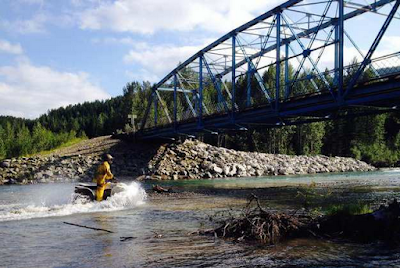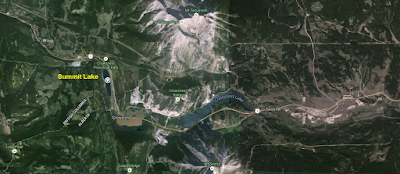Water, water, everywhere,
Nor any drops to drink.
- Samuel Taylor Coleridge
March 22 is 2015 World Water Day. The UN established
World Water Day in 1993 as a day to talk about how we will manage water in the future. The topic for this year is
Water and Sustainable Development, a topic that should resonate well for folks living here in Alberta.
Canada has the
third largest supply of renewable water in the world after Brazil and Russia. With such abundance, it is easy for us to take this resource for granted. Not only is Canada blessed with an abundance of natural resources, we seem to have the ideal mix of resources. Energy and water security are two enormous issues that our world will face in the 21st century, and Canada will have a key role to play.
Radical and Proud
Humans make a bigger impact on our environment than any other being on this planet. We have identified resources that are critical for our survival, and we are willing to make a considerable impact on our environment to extract and exploit raw materials from the earth. The environment and the natural resource industry are often at odds with one another, and historically a compromise between progress and the responsible development of resources has been difficult to identify. Those who identify as conservationists or environmentalists are often portrayed as radicals that are standing in the way of our economic potential.
Hatch Magazine contributor Todd Tanner recently wrote an
open letter to American anglers. I encourage you to read Todd's article, as I feel it is also very applicable to Albertans. I think Todd sums it up perfectly when he states that "it is almost as if our love of the great outdoors is standing in the way of progress". Somehow a desire to pass along a green and clean environment to our children is a radical idea that threatens our futures. What a fascinating concept that is.
Industry is synonymous with progress. When our economy is fraught with uncertainty, as we currently experience in Alberta, environmental considerations often take a back seat. When the economy is more stable, then we have time to acknowledge environmental concerns. Environmental concerns cannot be issues of convenience, they must be a priority regardless of the economic circumstances.
Wherever we walk, we leave footprints. In some cases the prints we have left are irreversible. While we may not be able to reverse our historical impact, we can ensure that present and future impacts are mitigated. I fail to see how protecting the future of our environment is a radical notion. The future of our resources and our environment has implications for each and every one of us.
 |
| Athabasca River running through the Alberta oil sands |
Social Licence
Social licence is a term that the natural resource industry throws around a lot in North America. Social licence is what exists when a project has the ongoing approval within the local community and other stakeholders. Social licence mandates that industry play by a set of rules that are created by local stakeholders. Should industry not abide by these rules, projects cannot move forward and will face considerable public scrutiny.
In my estimation social licence is a very romantic notion. The stakeholder engagement process involved can be very costly and time consuming. While many operators are talking the good talk, I am still not convinced that they view social licence as something that is good for business. Shell Canada receives a considerable subsidy from the Albertan government for the
Quest Carbon Capture and Storage project, but would they still be moving this project forward if that subsidy did not exist? Industry needs to reach a place where they accept social licence as something they MUST obtain, rather than something they are forced to obtain.
 |
| Site of the Shell Quest Carbon Capture and Storage facility |
A paradigm shift is required in regards to the natural resource industry. Saying the right things needs to result in doing the right things as it relates to sustainable resource development. If you read the mission statements of companies like
Suncor or
Cenovus, they both reference operating in a manner that makes Canadians proud and demonstrates responsible stewardship of the land. Many companies are now including environmental performance reports as a part of their annual reporting. The industry is trending in a more positive direction as they are investing more resources into sustainability than they have in the past. This trend must continue.
Environmental performance must be a key pillar for oil and gas operators. As resources are developed, the industry must focus on ways to reduce the impact it has on our fresh water supplies. There is some terrific work being done in the Alberta oil sands that I feel is not getting the attention it deserves. In their
2014 Sustainability Report, Suncor reported that in 2013 their oil sands mining operation consumed 2.01 cubic metres of water to produce one cubic metre of oil - a 13 percent reduction in water consumption since 2007. That six year trend is positive, but that progress must continue to move forward.
Green Means Go
Environmentalists and conservationists have an important role to play in Alberta's future. The conversations about the responsible development of our natural resources will play a critical role in the future of our fresh water supplies. Today is World Water Day, a day for reflection on what role we as individuals can play to protect our most precious resource. Water is vital for all forms of life on this planet, what are you willing to do to protect it?











































